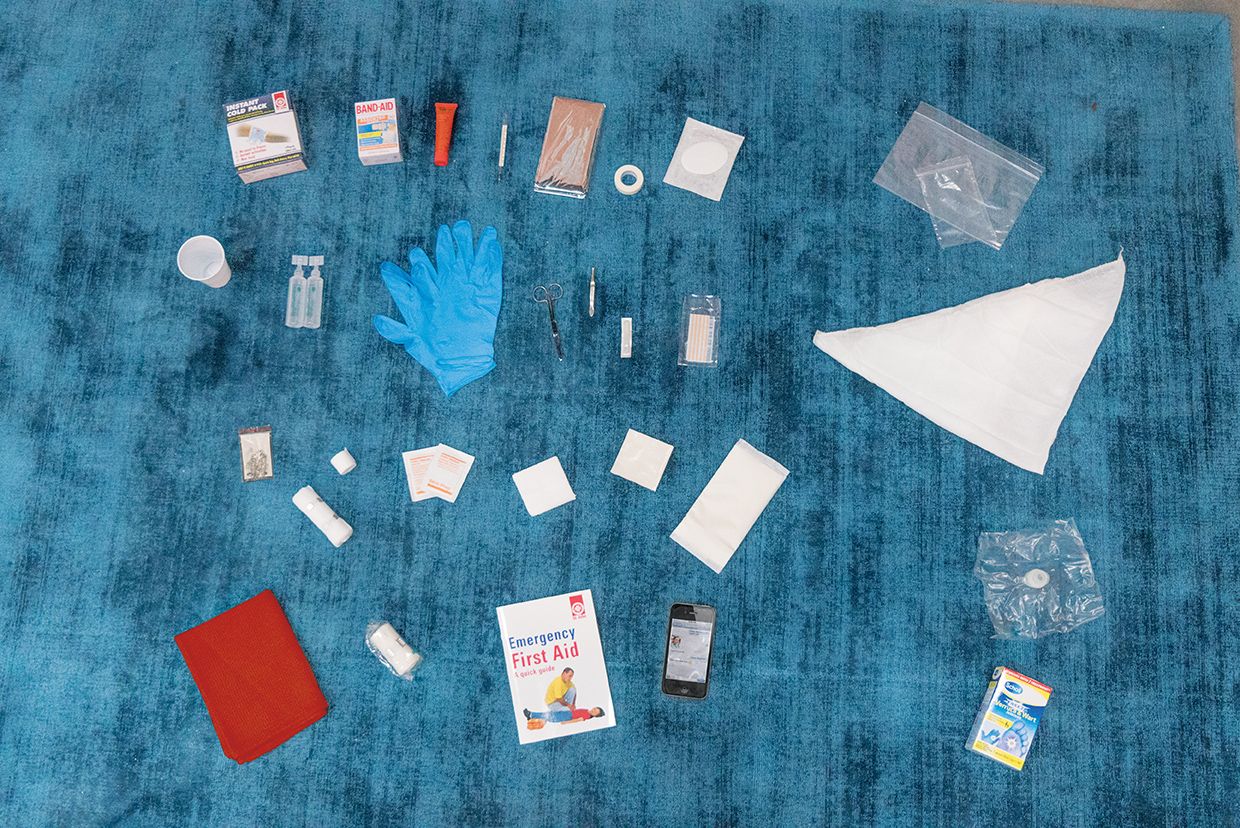A family first-aid kit isn’t only about band-aids and antiseptic creams. Here are the necessary items you need at home for emergencies.
Maybe they’re just uncoordinated or perhaps they simply have a death wish. However, as the youngest member of the family, they often don’t seem to have much regard of preserving themselves or their lives.
For most of us, we’ve probably never really felt much need for a first-aid kit before having children. Cue having a kid and suddenly, you’re finding life that life has progressed beyond minor cuts.
And since kissing boo-boos can only go so far, you actually need first aid supplies in the house.
For swallowing incidents or when your toddler puts something in their nose or ear, read this.
Before we run through the family first-aid kit checklist however, if you’re a new parent, it can also be helpful to go through a first aid course. What you do to help your sick or injured child in the minutes before an ambulance arrives can directly impact their health outcome.
Here’s a practical demonstration on how do you do CPR on an infant, and the types of first-aid skills you should know for any child-related emergency.
Your family first-aid kit checklist
Here’s a list of the products you should have in your family first-aid kit that will come in handy for common injuries.
- A cold pack (kept in the fridge or freezer for bumps, swelling, bruising)
- Band-Aids or plastic strips in assorted shapes and different sizes (for bleeding wounds)
- An antiseptic cream of your choice (for wounds)
- A digital underarm thermometer
- A rescue blanket (to keep an injured person warm)
- Adhesive tape (to keep dressings in place and hold bandages together)
- Eye pads (for eye injuries such as cuts)
- Paper or Styrofoam cups (to use in an eye wash for eye injuries such as foreign bodies)
- Ampoules of saline (for flushing eyes and cleaning wounds)
- Gloves (to protect yourself)
- Scissors
- Tweezers
- Splinter probes (to make removal of splinters easier)
- A light stick (for use in the dark to attract attention, for instance, when camping or bushwalking)
- Wound closure strips (good for holding lacerations together)
- Zip-lock plastic bags (for amputated parts)
- Safety pins (to hold triangular slings in place)
- Wide range of crepe bandages of varying widths
- A triangular bandage (a sling for arms or for splinting limbs—tie them or use them to apply pressure)
- Antiseptic wipes
- Sterile gauze swabs (for all sorts of different uses!)
- Non-stick dressing (for grazes and/or minor burns until you get medical help)
- A combine dressing pad (pressure dressing for bleeding)
- Heavyweight bandages (pressure bandages for snake and funnel-web spider bites)
- A resuscitation mask
- Freezing spray for ticks, e.g. Wartoff
- Red-coloured hand towel (so the blood doesn’t show)
- Timer
- A CPR and first-aid guide
Information extracted, with permission, from A Life. A Finger. A Pea Up a Nose, by Sarah Hunstead (HarperCollins, 2017).
How helpful was this article?
Click on a star to rate it!
0 / 5. 0
Be the first to rate this post!
Sarah Hunstead
Related posts
Subscribe
Receive personalised articles from experts and wellness inspiration weekly!

